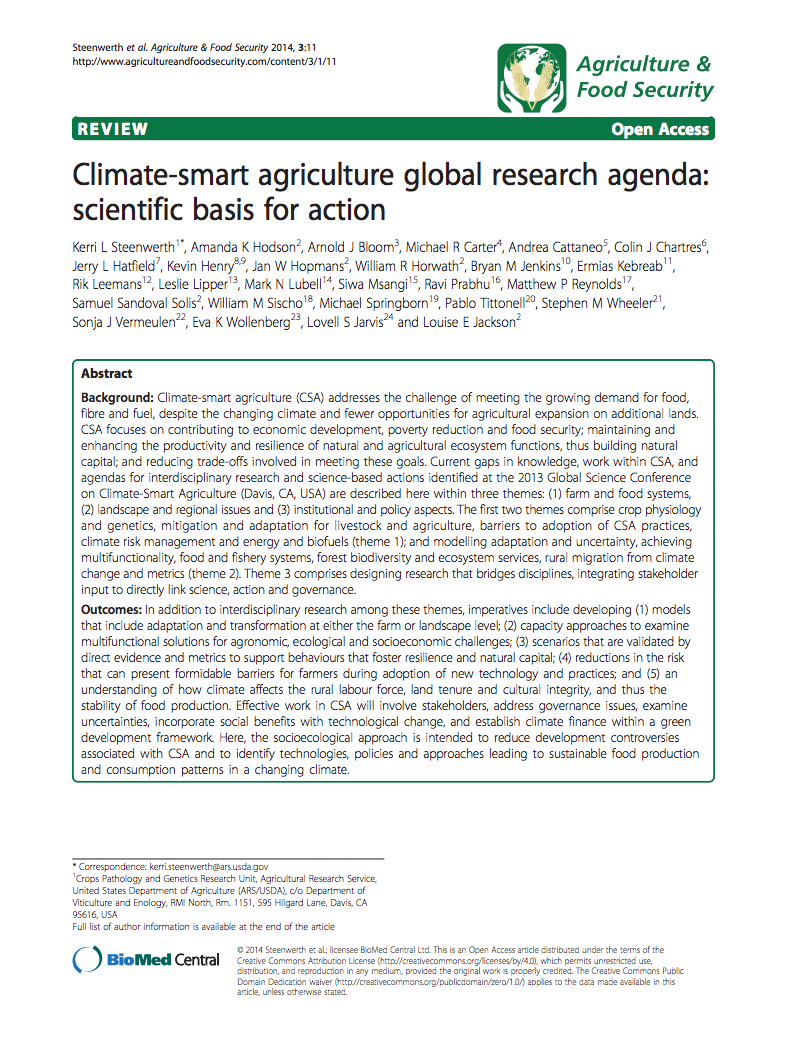Resource information
Creative Commons Attribution License (http://creativecommons.org/licenses/by/4.0), which permits unrestricted use,
distribution, and reproduction in any medium, provided the original work is properly credited. The Creative Commons Public
Domain Dedication waiver (http://creativecommons.org/publicdomain/zero/1.0/) applies to the data made available in this
article, unless otherwise stated.
Climate-smart agriculture (CSA) addresses the challenge of meeting the growing demand for food, fibre and fuel, despite the changing climate and fewer opportunities for agricultural expansion on additional lands. CSA focuses on contributing to economic development, poverty reduction and food security; maintaining and enhancing the productivity and resilience of natural and agricultural ecosystem functions, thus building natural capital; and reducing trade-offs involved in meeting these goals. Current gaps in knowledge, work within CSA, and agendas for interdisciplinary research and science-based actions identified at the 2013 Global Science Conference on Climate-Smart Agriculture (Davis, CA, USA) are described here within three themes: (1) farm and food systems, (2) landscape and regional issues and (3) institutional and policy aspects. The first two themes comprise crop physiology and genetics, mitigation and adaptation for livestock and agriculture, barriers to adoption of CSA practices, climate risk management and energy and biofuels (theme 1); and modelling adaptation and uncertainty, achieving multifunctionality, food and fishery systems, forest biodiversity and ecosystem services, rural migration from climate change and metrics (theme 2). Theme 3 comprises designing research that bridges disciplines, integrating stakeholder input to directly link science, action and governance.

